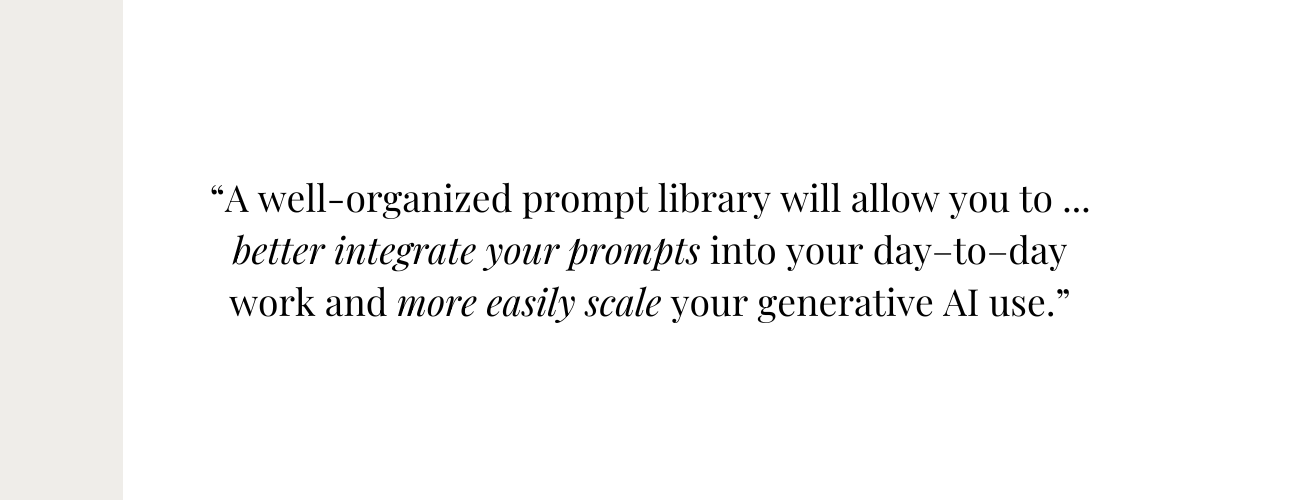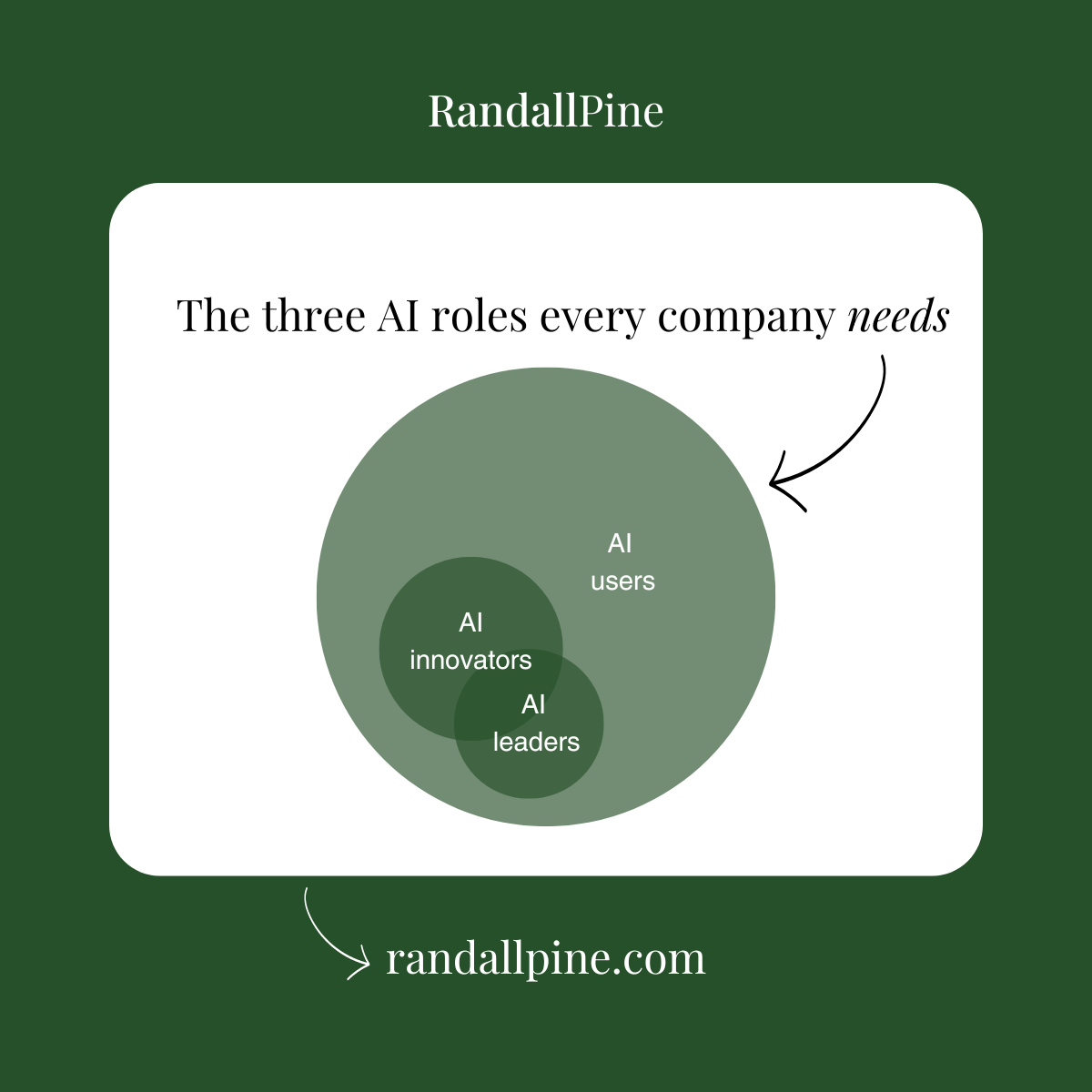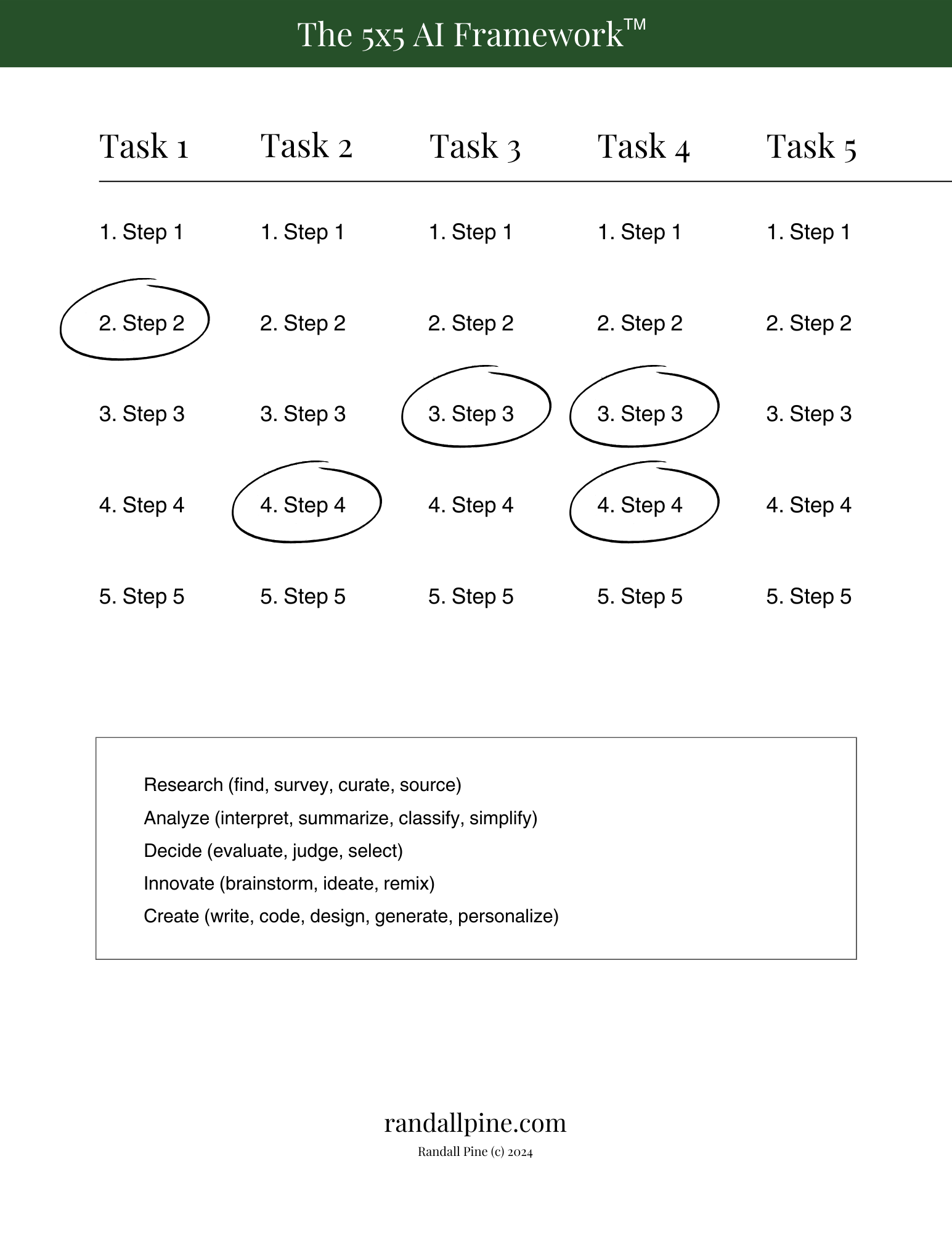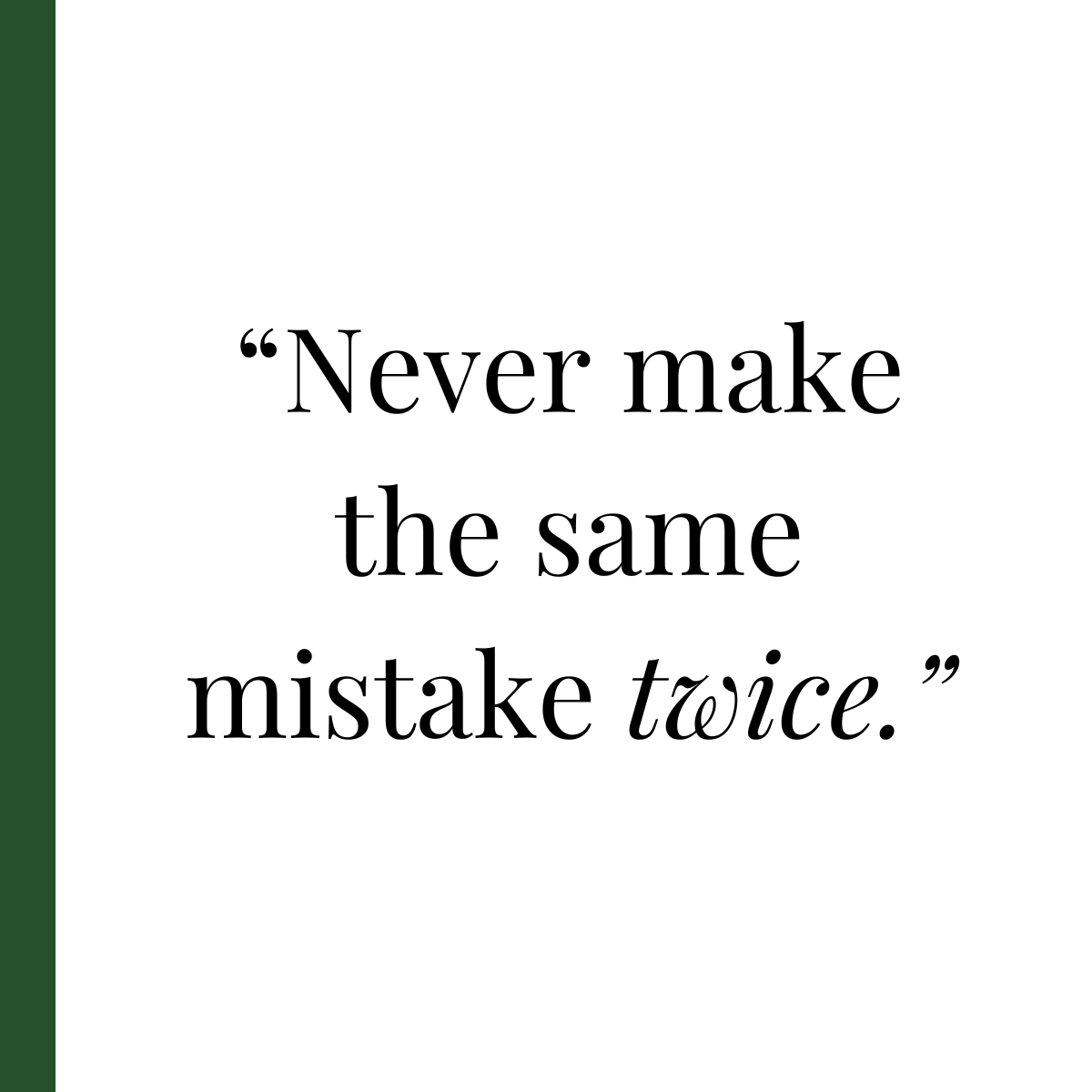Back in December, I revamped our AI prompt library and shared the full process. Months later, I'm so happy to see that our new system has held up even better than I expected.
Some benefits I've noticed:
* It's faster to find the right prompt when I need it.
* It's easier to check our existing prompts before writing a new one.
* It's simpler to swap out a context block than to rewrite whole sections of prompts.
Prompts are processes, workflows, and IP. Our best ones result in efficiency gains of 10%, 20%, 30%, or more — in other words, the time I invested in this project has already paid for itself.
A well-organized prompt library will allow you to ... better integrate your prompts into your day–to–day work and more easily scale your generative AI use.
If you don’t yet have a prompt library, you need one — that is, if you intend to save your intellectual property, scale your AI adoption, or share prompts with others.
Not having a well-organized prompt library could lead to:
❌ Lost Knowledge
The most obvious risk is losing your personal intellectual property or valuable institutional knowledge.
If you can't find it, you can't use it. And if you can't use it, you can't replicate it.
❌ Redundancies
When prompts aren't centralized or organized in any useful way, this leads to inefficiencies and loss of version control.
❌ Information Silos
If everyone on your team is storing their prompts separately, there could be valuable information hidden away that could benefit other team members. By controlling the repository of prompts and versions, everyone's work gets better.
❌ Compliance Breaches
The worst-case scenario is that unmanaged prompts could lead to breaches in organizational or legal regulations. This might be because of what is included in the prompt (confidential or sensitive information) or what is excluded (such as a disclaimer to not produce harmful, biased, or inappropriate responses).
How to Create an AI Prompt Library
Here's the short version of what we did:
- Choose a system (platform, naming convention, and hierarchy)
- Define your context blocks (regularly referenced, "canned" details)
- Standardize prompt names
- Categorize, organize, and scale
You can read more about what we did in our blog post, How to Organize and Scale Your Generative AI Prompt Library.
To start yours, borrow our free template.
Get a free template to organize your company's generative AI prompt library.
Not having a well-organized prompt library could lead to:
- Lost knowledge. If you can't find it, you can't use it. And if you can't use it, you can't replicate it.
- Redundancies. Multiple copies of the same or similar prompts creates inefficiency and undermines version control.
- Information silos. By controlling the repository of prompts and versions, everyone's work gets better.
- Compliance breaches. Unmanaged prompts can threaten your company with the exposure of confidential information or the creation of harmful or biased work.







